Ingersoll-Rand 7AL3 Operation and Maintenance Manual
- Category
- Power tools
- Type
- Operation and Maintenance Manual

Refer All Communications to the Nearest
Ingersoll–Rand Office or Distributor.
Printed in U.S.A.
Ingersoll–Rand Company 1994
03530896
Form P6532
Edition 10
February, 1994
OPERATION AND MAINTENANCE MANUAL
for
SERIES 7 AIR DRILLS
TPD1388
IMPORTANT SAFETY INFORMATION ENCLOSED.
READ THIS MANUAL BEFORE OPERATING TOOL.
FAILURE TO OBSERVE THE FOLLOWING WARNINGS COULD RESULT IN INJURY.
• Always operate, inspect and maintain this tool in
accordance with American National Standards
Institute Safety Code for Portable Air Tools
(ANSI–B186.1).
• For safety, top performance and maximum
durability of parts, operate this tool at 90 psig
(6.2 bar/620 kPa) maximum air pressure at the
inlet with 3/8” (10 mm) inside diameter air supply
hose.
• Air powered tools can vibrate in use. Vibration,
repetitive motions or uncomfortable positions may
be harmful to your hands and arms. Stop using any
tool if discomfort, tingling feeling or pain occurs.
Seek medical advice before resuming use.
• Always turn off the air supply and disconnect the
air supply hose before installing, removing or
adjusting any accessory on this tool, or before
performing any maintenance on this tool.
• Keep hands, loose clothing and long hair away
from rotating end of tool.
• Anticipate and be alert for sudden changes in
motion during start up and operation of any power
tool.
• Tool accessory may continue to rotate briefly after
throttle is released.
• Do not lubricate tools with flammable or volatile
liquids such as kerosene, diesel or jet fuel.
• Do not remove any labels. Replace any damaged
label.
• Use accessories recommended by Ingersoll–Rand.
• Always use a Dead Handle (47) with Models 7AN4
and 7AQ4.
The use of other than genuine Ingersoll–Rand replacement parts may result in safety hazards, decreased tool
performance, and increased maintenance, and may invalidate all warranties.
Ingersoll–Rand is not responsible for customer modification of tools for applications on which Ingersoll–Rand was not
consulted.
Repairs should be made only by authorized trained personnel. Consult your nearest Ingersoll–Rand Authorized
Servicenter.
It is the responsibility of the employer to place the information in this manual into the hands of the operator.

2
2
WARNING LABEL IDENTIFICATION
FAILURE TO OBSERVE THE FOLLOWING WARNINGS COULD RESULT IN INJURY.

3
3
PLACING TOOL IN SERVICE
LUBRICATION
Ingersoll–Rand No. 10. Ingersoll–Rand No. 28.
Always use an air line lubricator with these tools.
We recommend the following Filter–Lubricator–Regulator
Unit:
For USA – No. C22–04–G00
For International – No. C26–04–A29
Motor
Before starting the tool and after each eight hours of
operation, unless the air line lubricator is used, detatch
the air hose and inject 1.5 cc of Ingersoll–Rand No. 10 Oil
into the air inlet.
For models with D, H, J, JJ, K, and L gearing, after
each 50,000 cycles or one month of operation,
whichever comes first, inject approximately 6 cc of
Ingersoll–Rand No. 28 Grease into the Grease Fitting (39).
For models with M, N, or Q gearing, after each 50,000
cycles or one month of operation, whichever comes first,
inject approximately 9 cc of Ingersoll–Rand No. 28
Grease into the Grease Fitting (39).
INSTALLATION
Air Supply and Connections
Always use clean dry air. Dust, corrosive fumes and/or
excessive moisture can ruin the motor of an air tool.
An air line filter can greatly increase the life of an air tool.
The filter removes dust and moisture. Low pressure (under
90 psig; 6.2 bar/620 kPa) reduces the speed of all air tools.
Low air pressure not only wastes time, but also costs
money. High air pressure (over 90 psig; 6.2 bar/620 kPa)
raises performance beyond the rated capacity of the tool
and could cause injury. Be sure all hoses and fittings are
the correct size and are tightly secured.
See Dwg. TPD905–1 for a typical piping arrangement.
MAIN LINES 3 TIMES
AIR TOOL INLET SIZE
TO
AIR
SYSTEM
TO
AIR
TOOL
LUBRICATOR
REGULATOR
FILTER
BRANCH LINE 2 TIMES
AIR TOOL INLET SIZE
DRAIN REGULARLY
COMPRESSOR
(Dwg. TPD905–1)
Series 7 Air Drills are designed for drilling operations in the aerospace, automotive, appliance, electronic,
machining and furniture industries.
HOW TO ORDER AN AIR DRILL
PISTOL GRIP HANDLE
Free Speed Chuck Capacity
Model rpm in mm
7AD1
20 000 1/4 6
7AH1 6 000 1/4 6
7AJ1 4 800 1/4 6
7AJJ1 4 000 1/4 6
7AK2 3 200 3/8 10
7AL3 2 400 3/8 10
7AM3 1 400 3/8 10
7AN4 900 1/2 13
7AQ4 600 1/2 13

MAINTENANCE SECTION
4
(Dwg. TPA786–5)

MAINTENANCE SECTION
5
PART NUMBER FOR ORDERING
PART NUMBER FOR ORDERING
1 Motor Housing Assembly . . . . . . . . . . . . . . . 7AH–A40A 26 Bearing Spring Washer (2) . . . . . . . . . . . . . . . . 7AH–278
* Warning Label . . . . . . . . . . . . . . . . . . . . . WARNING–7–99 27 Bearing Housing Spacer . . . . . . . . . . . . . . . . . 7AH–81
2 Bearing Nut . . . . . . . . . . . . . . . . . . . . . . . 7AH–105A 28 Spindle
♦• 3 Rear Rotor Bearing . . . . . . . . . . . . . . . . . 7AH–24 for D or J ratio . . . . . . . . . . . . . . . . . . . 7AJ–8A
4 Trigger Bushing . . . . . . . . . . . . . . . . . . . . 4RA–91 for H ratio . . . . . . . . . . . . . . . . . . . . . . . 7AH–8
♦ 5 Throttle Valve Seat . . . . . . . . . . . . . . . . . . 7AH–303 for K or N ratio . . . . . . . . . . . . . . . . . . . 7AK–8
Trigger Assembly . . . . . . . . . . . . . . . . . . . 7AH–A93 for L ratio . . . . . . . . . . . . . . . . . . . . . . . 7AL–8
6 Trigger . . . . . . . . . . . . . . . . . . . . . . . . 5RA–93 for M ratio . . . . . . . . . . . . . . . . . . . . . . 7AM–8A
7 Trigger Pin . . . . . . . . . . . . . . . . . . . . . 7AH–94 for JJ or Q ratio . . . . . . . . . . . . . . . . . . . 7AQ–8A
8 Inlet Bushing Assembly . . . . . . . . . . . . . . 7AH–A565 29 Spindle Planet Gear Assembly (3)
♦• 9 Air Strainer Screen . . . . . . . . . . . . . . . R0A2–61 for H ratio (15 teeth) . . . . . . . . . . . . . . . 7AH–A10
♦ 10 Throttle Valve . . . . . . . . . . . . . . . . . . . . . . 7AH–302 for J or M ratio (18 teeth) . . . . . . . . . . . 7AJ–A10
♦ 11 Throttle Valve Spring . . . . . . . . . . . . . . . . 7AH–51 for K or N ratio (21 teeth) . . . . . . . . . . 7AK–A10
12 Muffler Assembly . . . . . . . . . . . . . . . . . . 3RA–A123 for L ratio (22 teeth) . . . . . . . . . . . . . . . 7AL–A10
♦• 13 Muffler O–ring . . . . . . . . . . . . . . . . . . 85H–167 for JJ or Q ratio (19 teeth) . . . . . . . . . . 7AQ–A10
13A Inlet Bushing Spacer . . . . . . . . . . . . . . . . 7AH–65 30 Spindle Planet Gear Bearing
♦• 14 Muffler Element . . . . . . . . . . . . . . . . . . . . . . . 7RA–311 (1 for each Gear)
♦• 15 Rear End Plate Gasket . . . . . . . . . . . . . . . . . . 7AH–739 for H ratio . . . . . . . . . . . . . . . . . . . . . . . 7AH–500
16 Rear End Plate . . . . . . . . . . . . . . . . . . . . . . . . 7AH–12 for J, JJ, M or Q ratio . . . . . . . . . . . . . . 7AJ–500
♦ 17 Rear End Plate Retainer . . . . . . . . . . . . . . . . . 7AH–118 for K, L or N ratio . . . . . . . . . . . . . . . . 7AK–500
18 Rotor Rotor Pinion
for D, H, J, L, M or N ratio . . . . . . 7AH–53 31 for H, M or N ratio (22 teeth) . . . . . . . . 7AH–17
for JJ ratio . . . . . . . . . . . . . . . . . . . 7AJJ–53 for J ratio (16 teeth) . . . . . . . . . . . . . . . 7AJ–17
for K or Q ratio . . . . . . . . . . . . . . . 7AK–53 for JJ ratio (13 teeth) . . . . . . . . . . . . . . 7AJJ–17
♦• 19 Vane Packet (set of 4 Vanes) . . . . . . . . . . . . . 7AH–42A–4 32 Rotor Pinion Spacer
20 Cylinder . . . . . . . . . . . . . . . . . . . . . . . . . . . . . 7AH–3A for H, J, M or N ratio . . . . . . . . . . . . . . 7AH–18
21 Front End Plate . . . . . . . . . . . . . . . . . . . . . . . 7AH–11 for JJ ratio . . . . . . . . . . . . . . . . . . . . . . . 7AJJ–18
22 Cylinder Dowel . . . . . . . . . . . . . . . . . . . . . . . 7AH–98 33 Drive Plate (for D ratio) . . . . . . . . . . . . . . . . . . 7AD–171
♦• 23 Front Rotor Bearing . . . . . . . . . . . . . . . . . . . . R1–22
24 Front Rotor Bearing Housing . . . . . . . . . . . . 7AH–13
* Not illustrated.
♦ Indicates Tune–up Kit part.
• To keep downtime to a minimum, it is desirable to have on hand certain repair parts. We recommend that you stock one (pair or set) of each part indicated by
a bullet (•) for every four tools in service.

MAINTENANCE SECTION
6
PART NUMBER FOR ORDERING
PART NUMBER FOR ORDERING
34 Gear Head 44 Drill Chuck
for M ratio (16 teeth) . . . . . . . . . . 7AM–216 0 to 1/4” capacity . . . . . . . . . . . . . R00A–99
for N ratio (10 teeth) . . . . . . . . . . . 7AN–216 0 to 5/16” capacity . . . . . . . . . . . . 6A–99
for Q ratio (13 teeth) . . . . . . . . . . . 7AQ–216 0 to 3/8” capacity . . . . . . . . . . . . . R1M–99
35 Gear Head Planet Gear Assembly (3) 5/64” to 1/2” capacity . . . . . . . . . . R0K–99
for M or N ratio (15 teeth) . . . . . . 7AH–A10 * Chuck Key
for Q ratio (21 teeth) . . . . . . . . . . . 7AP–A10 for R00A–99 Chuck . . . . . . . . . . . R00A–J253
36 Planet Gear Bearing (1 for each Gear) for 6A–99 Chuck . . . . . . . . . . . . . R0J–J253
(for M, N or Q ratio) . . . . . . . . . . . . . . . . 7AH–500 for R1M–99 Chuck . . . . . . . . . . . . R1M–J253
37 Gear Head Spacer (for M, N or Q ratio) . . . . 7AN–80 for R0K–99 Chuck . . . . . . . . . . . . R1T–J253
Gear Case Assembly 46 Dead Handle Adapter (2) . . . . . . . . . . . . . . . . 7A–49
for D, H, J, JJ, K or L ratio . . . . . . 7AH–A37A +47Dead Handle . . . . . . . . . . . . . . . . . . . . . . . . . . R1A–A48
for M, N or Q ratio . . . . . . . . . . . . 7AN–A37A 48 Pinch Bolt . . . . . . . . . . . . . . . . . . . . . . . . . 510–638
38 Gear Case * Chuck Shield Kit (for D, H, J, JJ,
for D, H, J, JJ, K or L ratio . . . . . . 7AH–B37A or K ratio) . . . . . . . . . . . . . . . . . . . . . . . . . . . . 7AH–K309
for M, N or Q ratio . . . . . . . . . . . . 7AN–B37A * Nameplate . . . . . . . . . . . . . . . . . . . . . . . . . . . 4RA–301
39 Grease Fitting . . . . . . . . . . . . . . . . . . . D0F9–879 * Nameplate Screw . . . . . . . . . . . . . . . . . . . . . . BN403–302
40 Spindle Bearing . . . . . . . . . . . . . . . . . . . . 5A–510 * Warning Label (for N or Q ratio) . . . . . . . . . . 7AQ–245
41 Spindle Bearing Retainer . . . . . . . . . . . . . 7AH–28 * Tune–up Kit (includes illustrated parts
42 Grease Shield . . . . . . . . . . . . . . . . . . . . . . 7AH–701 3, 5, 9, 10, 11, 13, 14, 15, 17, 19 and 23) . . . . 7A–DRILLS–TK1
43 Chuck Spacer . . . . . . . . . . . . . . . . . . . . . . . . . 5A–90 * Exhaust Silencer . . . . . . . . . . . . . . . . . . . . . . 7AH–310
* Not illustrated.
+ When ordering a Dead Handle (47), also order two Dead Handle Adapters (46).

7
MAINTENANCE SECTION
Always wear eye protection when operating or
performing maintenance on this tool.
Always turn off the air supply and disconnect the air
supply hose before installing, removing or adjusting
any accessory on this tool, or before performing any
maintenance on this tool.
LUBRICATION
Each time the Series 7 Air Drill is disassembled for
maintenance, repair or replacement of parts, lubricate the
tool as follows:
1. Moisten all O–rings with O–ring lubricant.
2. Work approximately 1.5 cc of Ingersoll–Rand No. 28
Grease into the Rear Rotor Bearing (3), Front Rotor
Bearing (23), and the Spindle Bearing (40).
3. For D, H, J, JJ, or L gearing, coat the gears with
6 cc of Ingersoll–Rand No. 28 Grease.
For M, N, or Q gearing, coat the gears with 9 cc of
Ingersoll–Rand No. 28 Grease.
DISASSEMBLY
General Instructions
1. Do not disassemble the tool any further than
necessary to repair or replace damaged parts.
2. Whenever grasping a tool or part in a vise, always use
leather–covered or copper–covered vise jaws to
protect the surface of the part and help prevent
distortion. This is particularly true of threaded
members and housings.
3. Do not remove any part which is a press fit in or on a
subassembly unless the removal of that part is
necessary for repairs or replacement.
4. Do not disassemble the tool unless you have a
complete set of new gaskets and O–rings for
replacement.
Disassembly of the Tool
1. Remove the Drill Chuck (44) by inserting the Chuck
Key in one of the holes in the Chuck and rapping it
sharply with a hammer.
2. Carefully grasp the handle of the Motor Housing (1)
in leather–covered or copper–covered vise jaws so
that the Spindle (28) is upward.
3. Using a wrench on the flats of the Gear Case (38),
loosen the Gear Case. Remove the tool from the vise.
Be certain to hold the Drill over the workbench so
that you will not lose any parts.
4. While holding the Drill horizontally, carefully
unscrew the Gear Case by hand and pull it away from
the Motor Housing.
5. For D, H, J, JJ or K ratio, hold the Gear Case
horizontally, and lightly tap the end of the Spindle
(28) with a plastic hammer to remove the Spindle and
Spindle Planet Gears (29) from the Gear Case.
On H, J or JJ ratios there is also a Rotor Pinion (31)
that may come out with the Spindle, or it may have
remained with the Rotor (18) when the Gear Case was
withdrawn.
6. For M, N or Q ratio, hold the Gear Case horizontally
and lightly tap the end of the Spindle (28) with a
plastic hammer to remove the Gear Head (34), Gear
Head Planet Gears (35), Gear Head Spacer (37),
Spindle (28) and Spindle Planet Gears (29). The
Rotor Pinion (31) may come out with the Gear Head
or it may have remained with the Rotor (18) when the
Gear Case was withdrawn.
7. Withdraw the Spindle Planet Gears and/or Gear Head
Planet Gears from the Spindle and/or Gear Head.
8. If it is necessary to remove the Spindle Bearing (40)
from the front of the Gear Case, use a pair of internal
snap–ring pliers to remove the Spindle Bearing
Retainer (41).
9. Withdraw the Grease Shield (42) from the Gear Case.
10. Do not remove the Spindle Bearing (40) from the
Gear Case unless it is absolutely necessary and you
have a new bearing for a replacement. If you must
remove the Spindle Bearing, use an arbor that will
enter the front of the Gear Case and press the Spindle
Bearing from the Gear Case.
11. For H, J, JJ, M or N ratio, if the Rotor Pinion (31)
remained on the Rotor when the Gear Case was
separated from the Housing, withdraw the Rotor
Pinion along with the Rotor Pinion Spacer (32).
12. Remove the Front Rotor Bearing Housing (24) and
the two Bearing Spring Washers (26).
13. Grasp the splined end of the Rotor and pull the
assembled motor from the Motor Housing (1).
Make certain the Rear End Plate Retainer (17)
doesn’t spring away when it is slipped off the hub
of the Rotor.
14. Using a pair of external snap–ring pliers with just the
tips of the pliers inserted between the ends of the Rear
End Plate Retainer, spread the Retainer enough to
remove it from the groove in the hub of the Rotor.
15. Withdraw the Rear End Plate (16), Cylinder (20) and
Vanes (19).

8
MAINTENANCE SECTION
16. While supporting the Front End Plate (21) between
two blocks of wood on the table of an arbor press,
press the Rotor from the Front Rotor Bearing (23).
Check the Bearing for damage or roughness by slowly
rotating it.
17. Do not remove the Rear Rotor Bearing (3) unless you
have a new Bearing on hand for replacement. The old
Bearing will be damaged during the removal process.
To remove the Rear Rotor Bearing, thread a
No. 10–24 x 2” long cap screw, having at least 1/2” of
thread, through the Bearing Nut (2) located behind the
Bearing. Keep tightening the screw to jack the
Bearing from the Housing.
18. Unscrew the Air Inlet Bushing (8). Remove the Inlet
Bushing Spacer (13A) and withdraw the Muffler
Assembly (12), Throttle Valve Spring (11) and
Throttle Valve (10).
19. Withdraw the Trigger Assembly (6).
Only remove the Throttle Valve Seat (5) when
replacing it or when the Trigger Bushing (4) must
be replaced.
20. To remove the Throttle Valve Seat, insert a wire hook
through the central hole of the Seat and hooking the
underside of the Seat, pull the Seat out of the Motor
Housing.
21. Before removing the Trigger Bushing, all Seals and
components must be removed from the Motor
Housing.
a. Grasp the Motor Housing in leather–covered or
copper–covered vise jaws with the Trigger
Bushing upward.
Apply enough heat to warm the Housing, but
not enough heat to distort it.
b. Using a torch, apply heat to the Motor Housing
around the Bushing.
c. Thread a No. 10–32 tap into the Bushing and pull
the Bushing out of the Housing with the tap.
ASSEMBLY
General Instructions
1. Always press on the inner ring of a ball–type bearing
when installing the bearing on a shaft.
2. Always press on the outer ring of a ball–type bearing
when pressing the bearing into a bearing recess.
3. Whenever grasping a tool or part in a vise, always use
leather–covered or copper–covered vise jaws. Take
extra care with threaded parts and housings.
4. Always clean every part and wipe every part with a
thin film of oil before installation.
5. Check every bearing for roughness. If an open
bearing must be cleaned, wash it thoroughly in a
clean, suitable, cleaning solution and dry with a clean
cloth. Sealed or shielded bearing should never be
cleaned. Work grease thoroughly into every open
bearing before installation.
6. Apply a film of O–ring lubricant to all O–rings before
final assembly.
7. Unless otherwise noted, press on the stamped end of a
needle bearing when installing the needle bearing in a
recess. Use a bearing inserting tool similar to the one
shown in Dwg. TPD786.
Needle Bearing Inserting Tool
SHOULDER TO
REGULATE DEPTH
PILOT TO FIT I.D. OF
BEARING.
LENGTH OF PILOT TO BE
APPROXIMATELY 1/8”
LESS THAN LENGTH OF
BEARING
(Dwg. TPD786)
Assembly of the Tool
1. If the Trigger Bushing (4) was removed, proceed as
follows:
a. Put a few drops of Loctite* No. 601 Sealant on
the end of a thin stick and insert the stick into the
trigger bushing hole of the Motor Housing. Work
the stick so that the Sealant flows against the
shoulder inside the Housing.
b. Insert the Trigger Bushing into the Motor
Housing (1) to a depth of approximately one–half
the length of the Bushing.
* Registered trademark of Loctite Corporation.

9
MAINTENANCE SECTION
c. Put a few drops of Loctite No. 601 Sealant in the
counterbore surrounding the outside diameter of
the Bushing.
d. Rotate the Bushing approximately 180_ to make
certain the Sealant makes complete contact
around the outside of the Bushing.
e. Push the Bushing into the Housing until it
bottoms against the shoulder inside the Housing.
f. Allow the Sealant to cure for eight hours at room
temperature.
2. Carefully grasp the Motor Housing in leather–covered
or copper–covered vise jaws, inlet end facing upward.
3. If the Throttle Valve Seat was removed, use a
flat–faced rod 1/2” (12.7 mm) x 3” (76 mm) to push
the Seat into the Motor Housing until it seats.
4. Press the Trigger (6) onto the grooved end of the
Trigger Pin (7) so that it is at right angles to the hole
in the opposite end of the Pin.
5. Insert a Trigger Assembly into the Trigger Bushing so
that the hole in the Trigger Pin aligns dead center
with the hole in the Throttle Valve Seat.
6. While looking down through the bore of the Throttle
Valve Seat, insert the Trigger Assembly (6) until the
hole in the Trigger Stem is centered beneath the hole
in the Throttle Valve Seat.
7. Insert the Throttle Valve (10) so that the long–stem
end passes through the hole in the Trigger Stem.
8. Place the Air Strainer Screen (9), closed end first,
inside the large end coil of the Throttle Valve Spring
(11).
9. Insert the Throttle Valve Spring and Screen, small coil
first, so that the Spring encircles the end of the
Throttle Valve.
10. Place the Muffler Assembly (12) on the face of the
handle so that the perforated baffle extends into the
handle. Place the Inlet Bushing Spacer (13) between
the Muffler Assembly (12) and Air Inlet Bushing (8)
and tighten the Air Inlet Bushing to a minimum of
25 ft–lb (33.9 Nm) torque.
11. Remove the Motor Housing from the vise.
12. If the Rear Rotor Bearing (3) was removed, install a
new one as follows:
a. Place the Bearing Nut (2) in the bore at the
bottom of the bearing recess in the Motor
Housing (1).
b. Using a bearing inserting tool that has a pilot
extending into the Bearing, and a shoulder that
contacts the outer race of the bearing, press the
Rear Rotor Bearing, unstamped end first, into the
bearing recess until it is about 0.010” (0.25 mm)
below flush.
c. Inject a little of the recommended grease in the
Bearing.
13. Slide the Front End Plate (21), flat side first, over the
splined end of the Rotor (18).
14. Using a sleeve that contacts only the inner race of the
Front Rotor Bearing (23), press the Front Rotor
Bearing onto the splined hub of the Rotor until it seats
against the Front End Plate.
15. The clearance between the Front End Plate and the
Rotor is critical. While holding the Front End Plate,
gently tap the splined end of the Rotor until you can
insert a 0.001” feeler gauge or shim between the face
of the Rotor and End Plate.
16. Grasp the splined end of the Rotor in leather– covered
or copper–covered vise jaws so that the short hub of
the Rotor is upward.
17. Wipe each Vane (19) with a film of the recommended
oil and place a Vane in each vane slot in the Rotor.
18. Place the Cylinder (20), air port end trailing, down
over the Rotor and against the Front End Plate.
19. Place the Rear End Plate (16), flat side first, over the
short hub of the Rotor.
20. Install the Rear End Plate Retainer (17) in the groove
on the rotor hub.
Make certain the Rear End Plate Retainer (17)
does not spring away as you slip it on the hub of
the Rotor.
21. Smear a film of the recommended grease on the Rear
End Plate Gasket (15) and place the Gasket on the
End Plate so that the port in the Gasket is aligned with
the port in the End Plate.
22. Using an assembly dowel 3/32” x 10” (2.3 mm x
254 mm), align the dowel groove in the Front End
Plate Cylinder, Rear End Plate and Gasket. Place the
assembly rod in the aligned grooves so that about 3”
of the rod extends beyond the Rear End Plate. Insert
the extension in the dowel hole at the bottom of the
housing bore, and slide the motor into the Motor
Housing until it seats.
23. Withdraw the assembly dowel and insert the Cylinder
Dowel (22).
24. Place the two Bearing Spring Washers (26) inside the
Front Rotor Bearing Housing (24).
25. Slide the Front Rotor Bearing Housing over the Front
Rotor Bearing.
26. Using a sleeve that contacts only the outer race of the
Bearing, press the Spindle Bearing (40) into the Gear
Case (38) until it seats.

10
MAINTENANCE SECTION
27. Place the Grease Shield (42) against the Spindle
Bearing so that the outer rim of the Grease Shield
slides over the outer ring of the Bearing.
28. Install the Spindle Bearing Retainer (41) in the groove
behind the Bearing and Grease Shield.
29. If the Spindle Planet Gear Bearings (30) were
removed, press in new Spindle Planet Gear Bearings
using a bearing inserting tool that has a pilot and that
contacts the outer radius of the Bearing. See
Dwg. TPD786. Press against the stamped end of the
Bearing.
30. Work a small amount of the recommended grease into
the gear teeth in the Gear Case.
31. Insert the Spindle (28), threaded end first, into the
Gear Case and through the bore of the Spindle
Bearing.
32. For D ratio, place the Drive Plate (33) over the shafts
on the Spindle and insert the Bearing Housing Spacer
(27).
For all other ratios, place a Spindle Planet Gear (29)
on each gear shaft on the Spindle.
33. For H, J, JJ, K or L ratio, insert the Bearing
Housing Spacer (27) into the Gear Case.
34. For H, J or JJ ratio, place the Rotor Pinion Spacer
(32) followed by the Rotor Pinion (31) over the
splined end of the Rotor.
35. For D, H, J, JJ, K or L ratio, thread the assembled
Gear Case onto the Motor Housing and tighten it to
40 to 50 ft–lb (54.2 to 67.8 Nm) torque.
36. For M, N or Q ratio, place the Gear Head Spacer
(37) in the Gear Case against the Spindle.
37. For M, N or Q ratio, insert the Gear Head (34) in the
Gear Case, meshing the gear teeth on the Gear Head
with the Spindle Planet Gears.
38. For M, N or Q ratio, place a Gear Head Planet Gear
(35) on each of the planet gear shafts on the Gear
Head, and insert the Bearing Housing Spacer (27) into
the Gear Case.
39. For M or N ratio, place the Rotor Pinion Spacer
(32), followed by the Rotor Pinion (31) over the
splined end of the Rotor.
40. For M, N or Q ratio, thread the assembled Gear
Case onto the Motor Housing and tighten it to 40 to
50 ft–lb (54.2 to 67.8 Nm) torque.

11
MAINTENANCE SECTION
TROUBLESHOOTING GUIDE
Trouble Probable Cause Solution
Loss of Power Low Air Pressure Check air supply. For top performance, the air
pressure must be 90 psig (6.2 bar/620 kPa) at the
inlet.
Plugged Air Strainer Screen Clean the Air Strainer Screen in a clean, suitable
cleaning solution. If the Screen cannot be cleaned,
replace it.
Clogged Muffler or Exhaust
Silencer
Clean the Muffler Element in a clean, suitable
cleaning solution. If it cannot be cleaned, replace
it.
Worn or broken Vanes Replace the complete set of Vanes.
Damaged Rear End Plate Gasket Install a new Rear End Plate Gasket.
Worn or broken Cylinder Replace the Cylinder if it is cracked or if the bore
appears wavy or scored.
Improper lubrication or dirt
build–up
Clean the Motor Unit parts and lubricate as
instructed.
Leaky Throttle Valve
Worn Throttle Valve and/or
Throttle Valve Seat
Install a new Throttle Valve and/or a Throttle
Valve Seat.
Dirt accumulation on Throttle
Valve and/or Throttle Valve Seat
Pour about 3 cc of a clean, suitable cleaning solu-
tion in the air inlet and operate the tool valve for
about 30 seconds. Immediately pour 3 cc of the
recommended oil in the air inlet and operate the
tool for 30 seconds to lubricate all the cleaned
parts.
Gear Case gets hot
Excessive grease Clean and inspect the Gear Case and gearing parts
and lubricate as instructed.
Worn or damaged parts Clean and inspect the Gear Case and gearing.
Replace worn or broken parts.
SAVE THESE INSTRUCTIONS. DO NOT DESTROY.
-
 1
1
-
 2
2
-
 3
3
-
 4
4
-
 5
5
-
 6
6
-
 7
7
-
 8
8
-
 9
9
-
 10
10
-
 11
11
Ingersoll-Rand 7AL3 Operation and Maintenance Manual
- Category
- Power tools
- Type
- Operation and Maintenance Manual
Ask a question and I''ll find the answer in the document
Finding information in a document is now easier with AI
Related papers
-
Ingersoll-Rand 6A Series Maintenance Information
-
Ingersoll-Rand 7AJJST4 Operation and Maintenance Manual
-
Ingersoll-Rand 5 series Maintenance Information
-
Ingersoll-Rand 728 series Maintenance Information
-
Ingersoll-Rand 7S48L Maintenance Information
-
Ingersoll-Rand QA12 Maintenance Information
-
Ingersoll-Rand 380SQ1-EU Maintenance Information
-
Ingersoll-Rand 7S48L Operation and Maintenance Manual
-
Ingersoll-Rand 1712B2/VW1035 User manual
-
Ingersoll-Rand QE8 Series Maintenance Information
Other documents
-
MAC TOOLS AWD099-S User manual
-
Sioux Tools 3A2108 ¹ Owner's manual
-
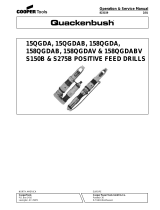 Cooper Tools Quackenbush S150B User manual
Cooper Tools Quackenbush S150B User manual
-
AIRCAT 4451 User manual
-
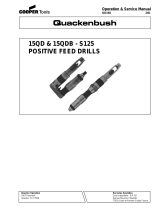 Quackenbush 15QDB-S125 Operation & Service Manual
Quackenbush 15QDB-S125 Operation & Service Manual
-
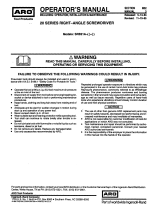 ARO SRB21A-10-H User manual
ARO SRB21A-10-H User manual
-
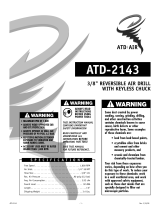 ATD Tools ATD-2143 User manual
ATD Tools ATD-2143 User manual
-
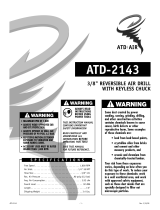 ATD Tools Drill ATD-2143 User manual
ATD Tools Drill ATD-2143 User manual
-
 ARO 2200 Series User manual
ARO 2200 Series User manual
-
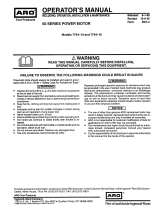 ARO 50 Series User manual
ARO 50 Series User manual

















